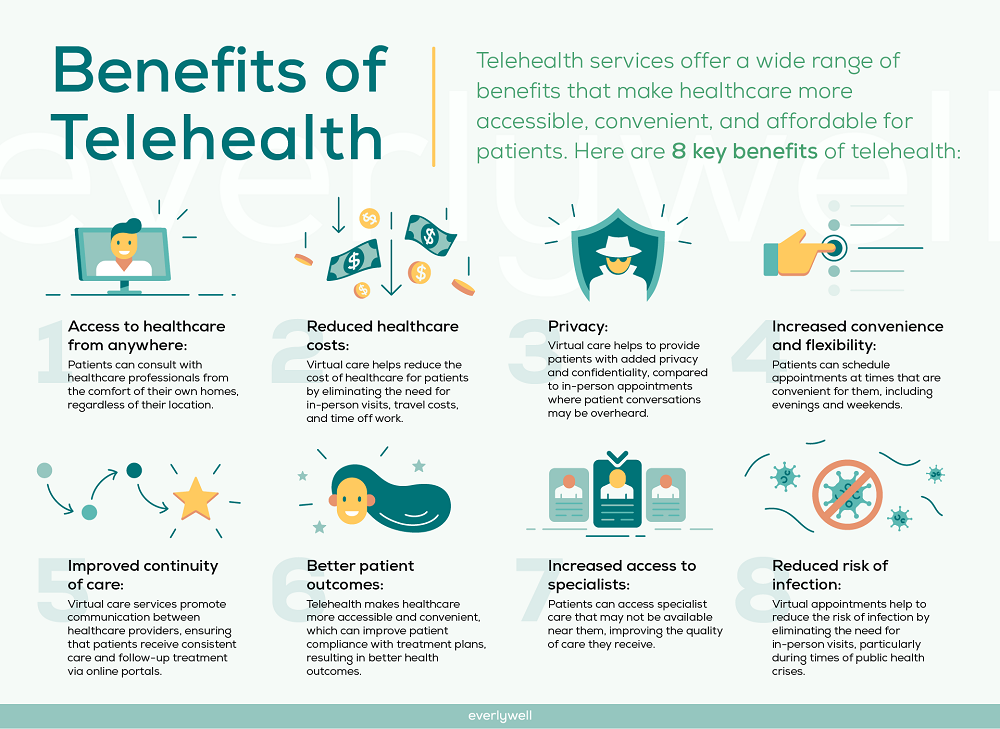
Can medication be prescribed via telehealth?
Medically reviewed on November 8, 2022 by Jordan Stachel, M.S., RDN, CPT. To give you technically accurate, evidence-based information, content published on the Everlywell blog is reviewed by credentialed professionals with expertise in medical and bioscience fields.
Table of contents
- What is telehealth?
- Can I get prescription medication through telehealth?
- Do I have to see a healthcare provider to get prescription medication?
- Care for your health conveniently with Everlywell
- Related content
According to the CDC, almost half of the US population uses at least one prescription medication. [1] Luckily, that refill can be just a click away—thanks to telehealth service.
Telehealth has opened the digital door for patients to access professional medical care right from their homes. With a newer medium, you might have a few questions about how this technology works—and, in particular, can providers prescribe medication via telehealth?
If you’re curious about receiving a prescription from your couch, then dive into our guide on telehealth’s role in prescription medicine.
What is telehealth?
So, what is telehealth and how does it work? Since COVID-19 began, the world of video chatting and virtual meetings has expanded into many professions. In healthcare, that expansion is most clear through telehealth. The three main types of telehealth include synchronous, asynchronous, and remote patient monitoring.
Telehealth service is the use of technological communication for medical professionals to give virtual care. [2] This could include any number of digital tools, such as:
- Video calls – When people think of telehealth, they usually imagine a video call. This allows a healthcare provider to immediately communicate with you through speech and visuals from any convenient location.
- Phone calls – For medical concerns that need no visuals, a phone call can help your healthcare provider address your needs.
- Messaging – With peak online security and encryption, providers can also communicate through direct messaging, file exchanging, or email.
- Wearable devices – If you need medical monitoring that doesn’t require staying in a medical care facility, wearable devices can help a provider assess your condition and gather vitals from afar.
While limited in touch and visuals, telehealth can address many primary care issues. Through just a simple video call, a medical professional can help you with: [3]
- Mental health issues and treatment plans
- Recurring conditions (UTIs, joint pain, etc.)
- Urgent care conditions (stomach bugs, flus, etc.)
- Post-surgery care
- Skin conditions
- Physical therapy
- Remote vitals and biomarkers monitoring
- Lab and X-Ray results analysis
Last but not least, telehealth treatment can sometimes address your telehealth prescription management—but your situation may affect the circumstances. Let’s dive into the regulations and process behind this convenient method of primary care.

Can I get prescription medication through telehealth?
The answer depends on where you live, what medicine you need, and a few other factors.
After COVID-19, professional and legal protocols are still catching up to the sharp rise of telehealth. This means that while some people may have full access to telehealth and the ability to receive prescriptions virtually, some medicines, local laws, geographic locations, and healthcare providers may affect the availability of this service. [4]
Your state’s telehealth laws
Every state has its own laws that govern telehealth, prescription medications, and how both subjects intersect. [4] Some states are more restrictive of e-prescribing, while others are more flexible.
For telehealth state regulations, factors that can affect your access may include: [4, 5]
- Patient-provider relationship
- Frequency of prescription
- Mandates for e-prescriptions
- Controlled substances vs. non-controlled substances
- Delivery method of prescription (phone vs. video)
- Provider licensing and title
If you’re curious if you could get a certain prescription through telehealth, contact a health care provider in your state.
Your prescription medicine needs
The most regulated aspect of telehealth prescriptions are the types of medicines. If you need a highly regulated prescription medication, you may need an in-person appointment to make sure the medication is right for you. See if your medicine needs fall under one of these controlled categories: [6]
- Abortion-inducing pills
- Stimulants (Adderall, Vyvanse, etc.)
- Opioids
- Benzos (alprazolam, clonazepam, etc.)
- Ketamine
- Anabolic steroids
Your healthcare provider’s options
At the end of the day, a healthcare provider is giving their expert opinion—which means they will use their professional judgment to decide if it is appropriate to prescribe you a medication via telehealth. Depending on your health condition and other circumstances, your healthcare provider may choose to not prescribe a certain medication over your telehealth appointment, and request that you seek in-person health care instead.
For many clinicians, telehealth is still quite a new technology. Medical providers may feel limited or doubtful over the amount of patient information they can glean through digital means. According to a McKinsey Physician Survey, 62% of healthcare providers recommended in-person visits over virtual visits. [5]
Similarly, only 38% said telehealth was an appropriate way to treat someone with an acute change in health—such as broken bones or sudden symptoms.5 Since prescription medicines may be a treatment for some acute conditions, that could interfere with e-prescribing what you might need.
Do I have to see a healthcare provider to get prescription medication?
The answer is absolutely—although “see” is a relative term.
No prescription can be filled without the approval of a licensed healthcare provider. Every state has individual laws on which providers can prescribe a mediation or fill a prescription, including titles like: [7]
- Advanced registered nurse practitioner
- Osteopathic physician assistant
- Dentist
- Naturopath
- Optometrist
- Osteopathic physician
- Pharmacist
- Certified physician assistant
- Physician
Care for your health conveniently with Everlywell
Telehealth is a great way to stay on top of your health, no matter how packed your schedule becomes. With Everlywell Virtual Care Visits, you can easily schedule a telehealth video call with a healthcare provider and get a clinician-approved care plan (which may include testing, prescriptions, and lifestyle recommendations).
Related content
Types of telehealth care and services
Differences between telehealth vs. in person care
How do I do a virtual visit with my healthcare provider?
STD prescription online: how it works
Telehealth security and privacy: key points to know
References
- Therapeutic Drug Use. Centers for Disease Control and Prevention. URL. Published March 5, 2018. Accessed November 8, 2022.
- What’s the difference between telemedicine and telehealth? American Academy of Family Physicians. URL. Published December 12, 2019. Accessed November 8, 2022.
- Understanding telehealth. HHS.gov. URL. Published February 25, 2021. Accessed November 8, 2022.
- State Telehealth Policies. National Conference of State Legislatures. URL. Accessed November 8, 2022.
- Patients love telehealth--physicians are not so sure. McKinsey. URL. Accessed November 8, 2022.
- Prescription of Controlled Substances: Benefits and Risks. StatPearls [Internet]. URL. Last updated September 21, 2022. Accessed November 8, 2022.
- Who Can Prescribe and Administer Prescriptions in Washington State. Washington State Department of Health. URL. Accessed November 8, 2022.